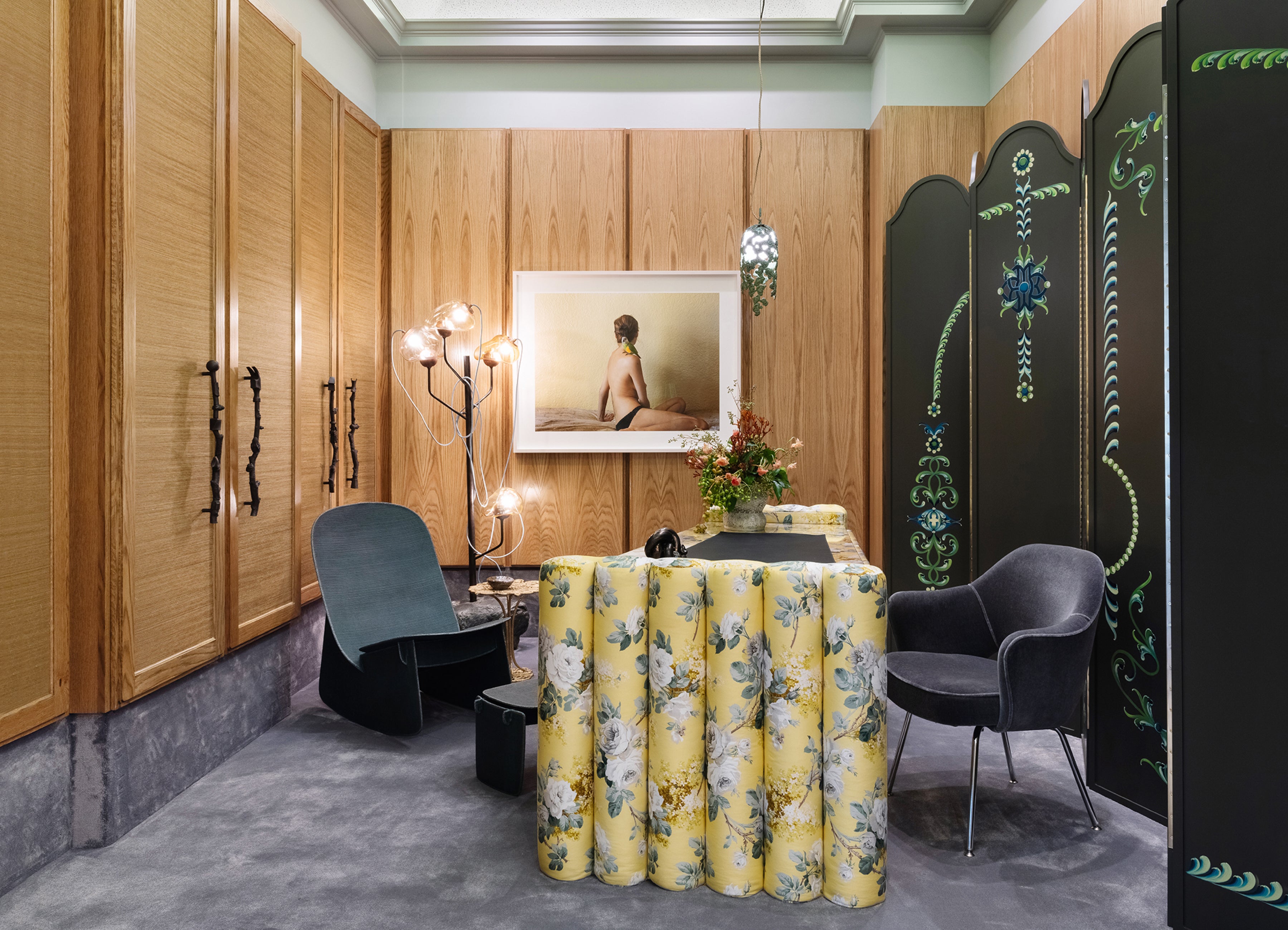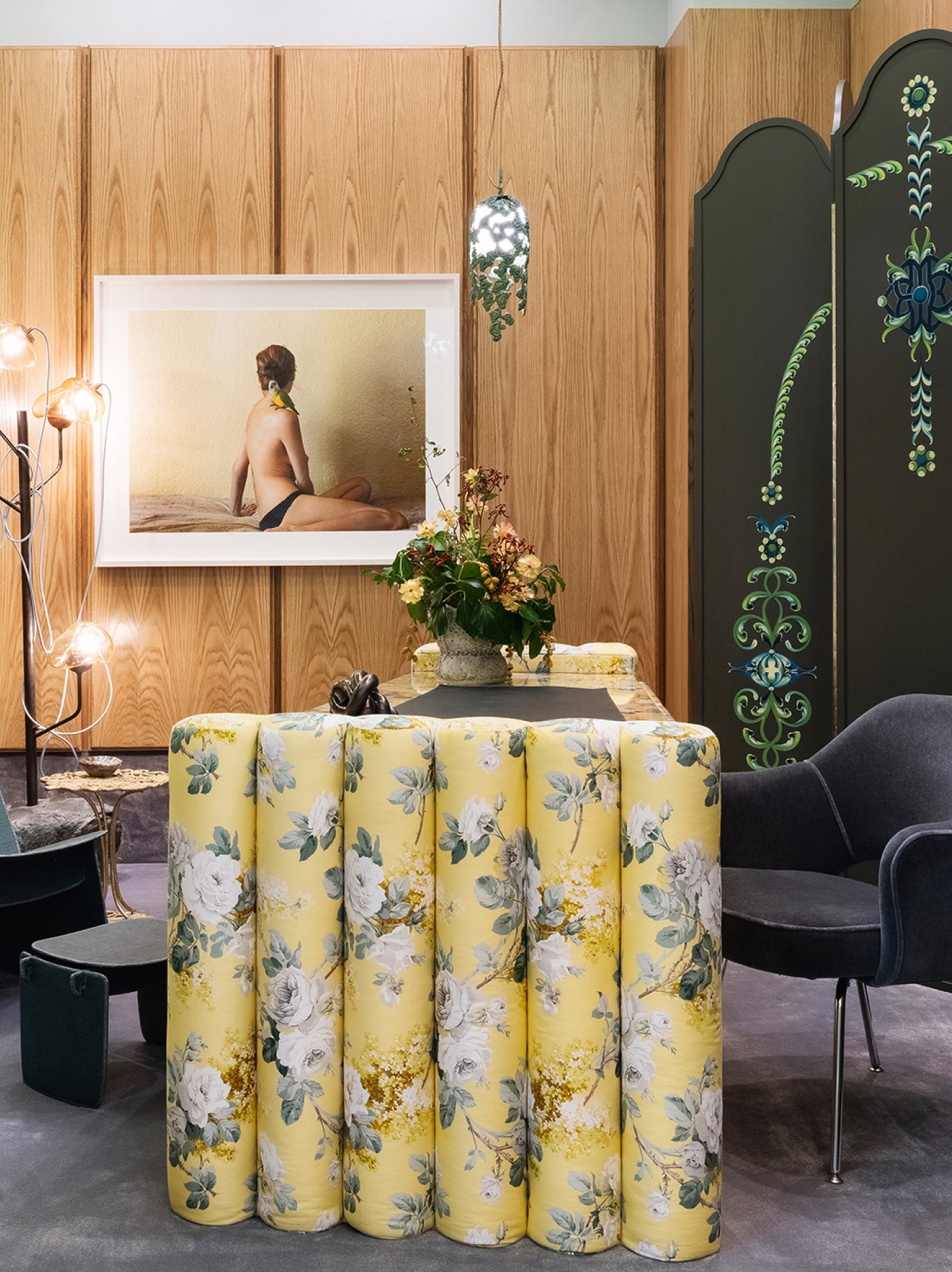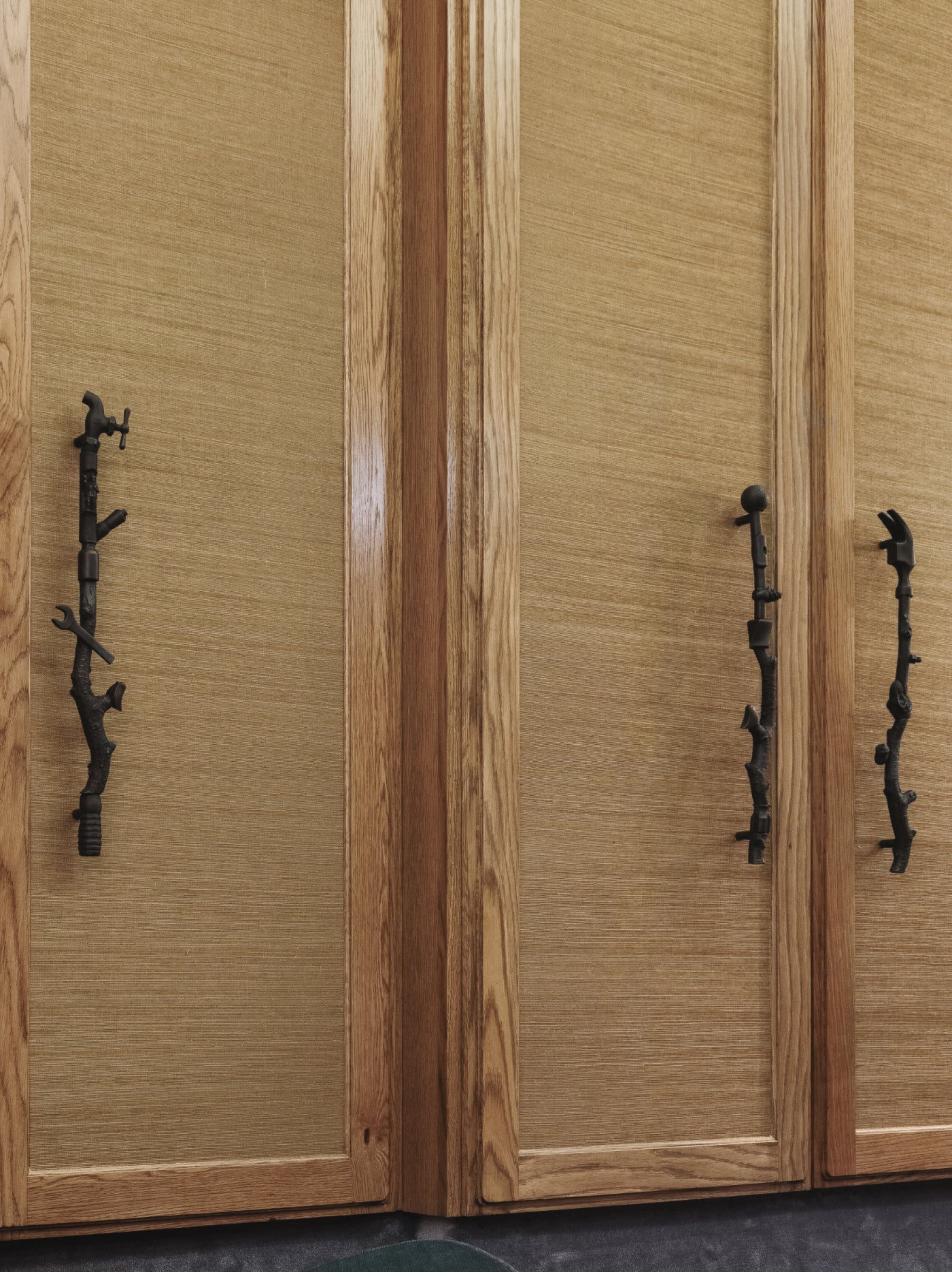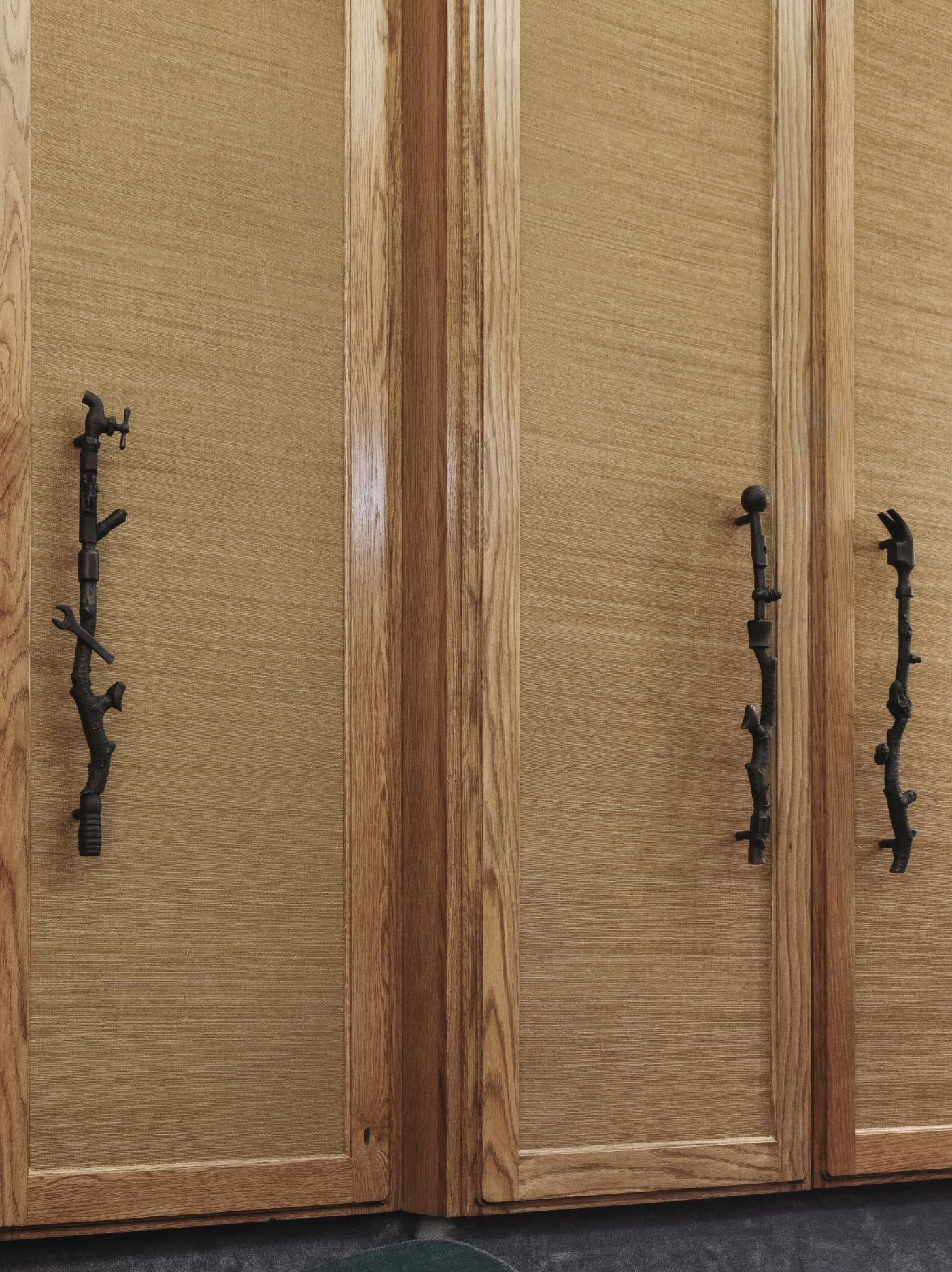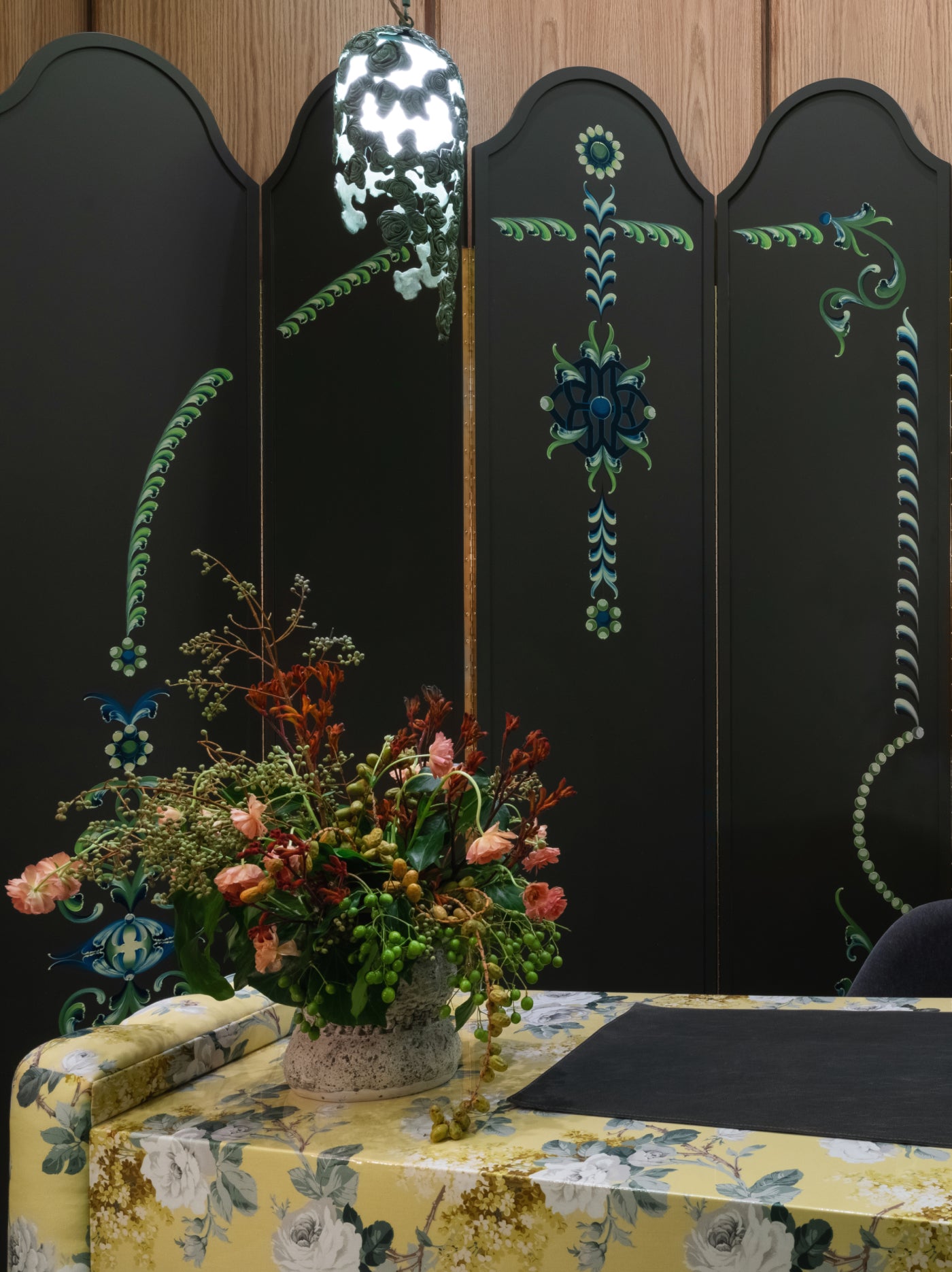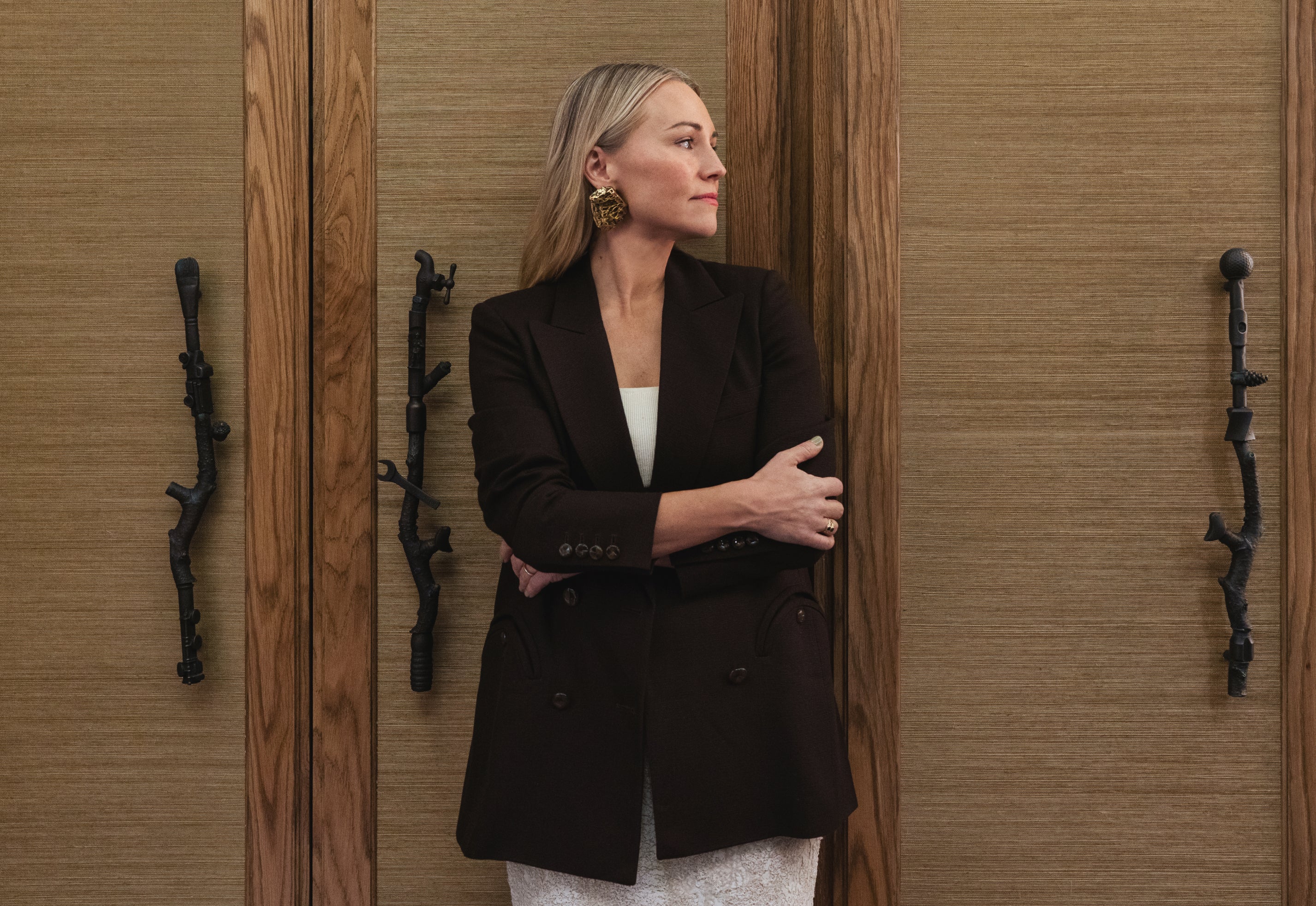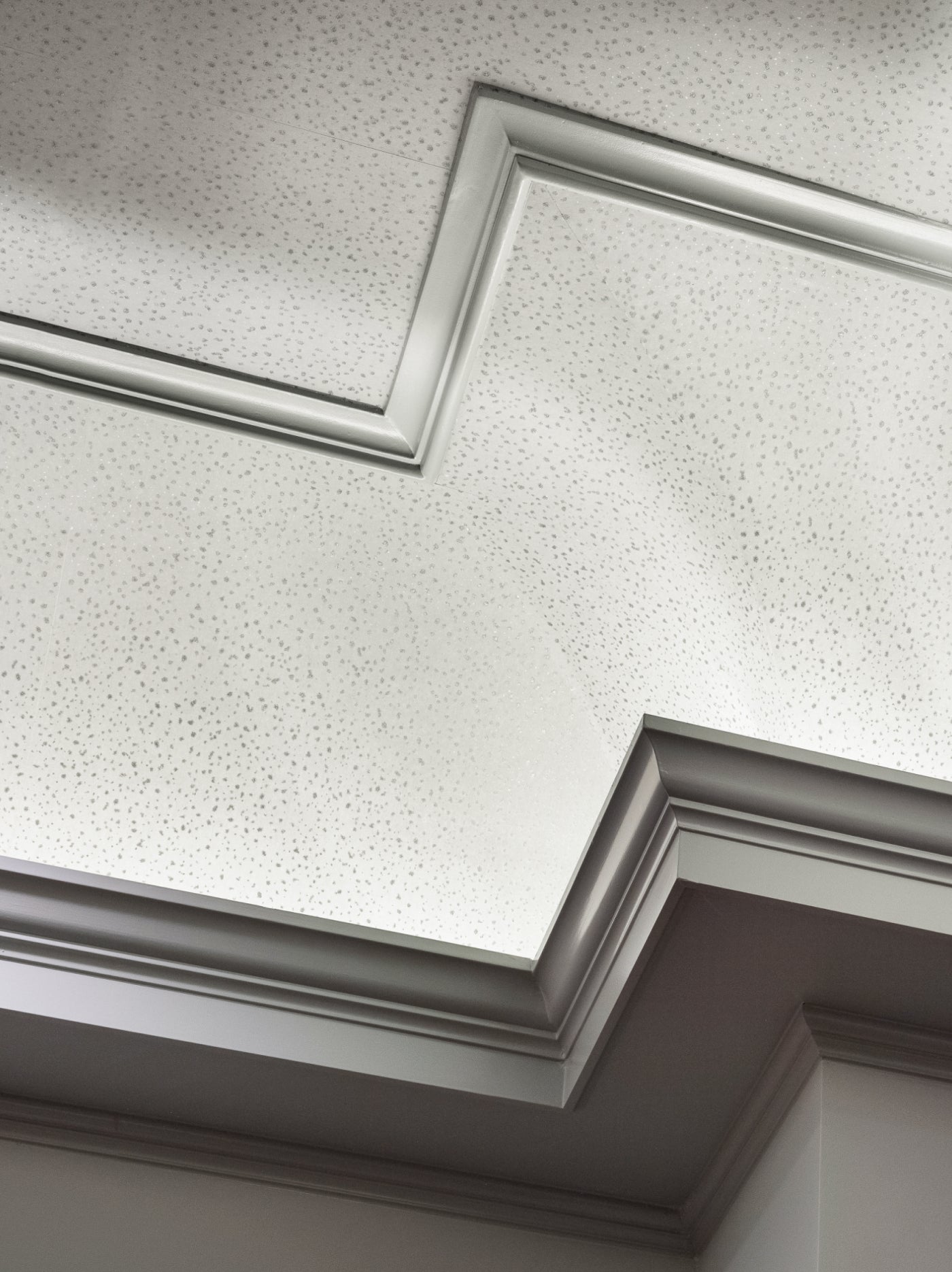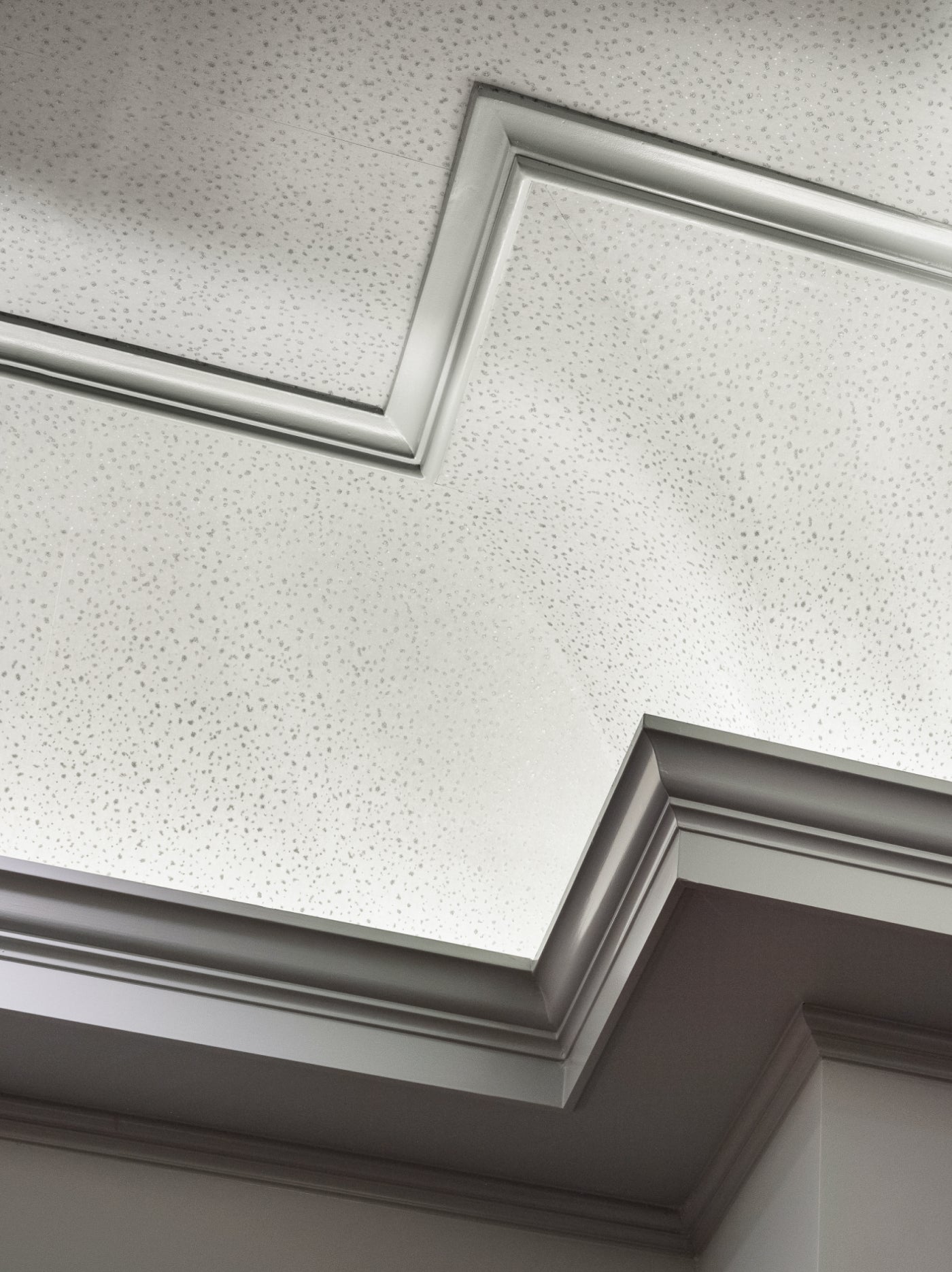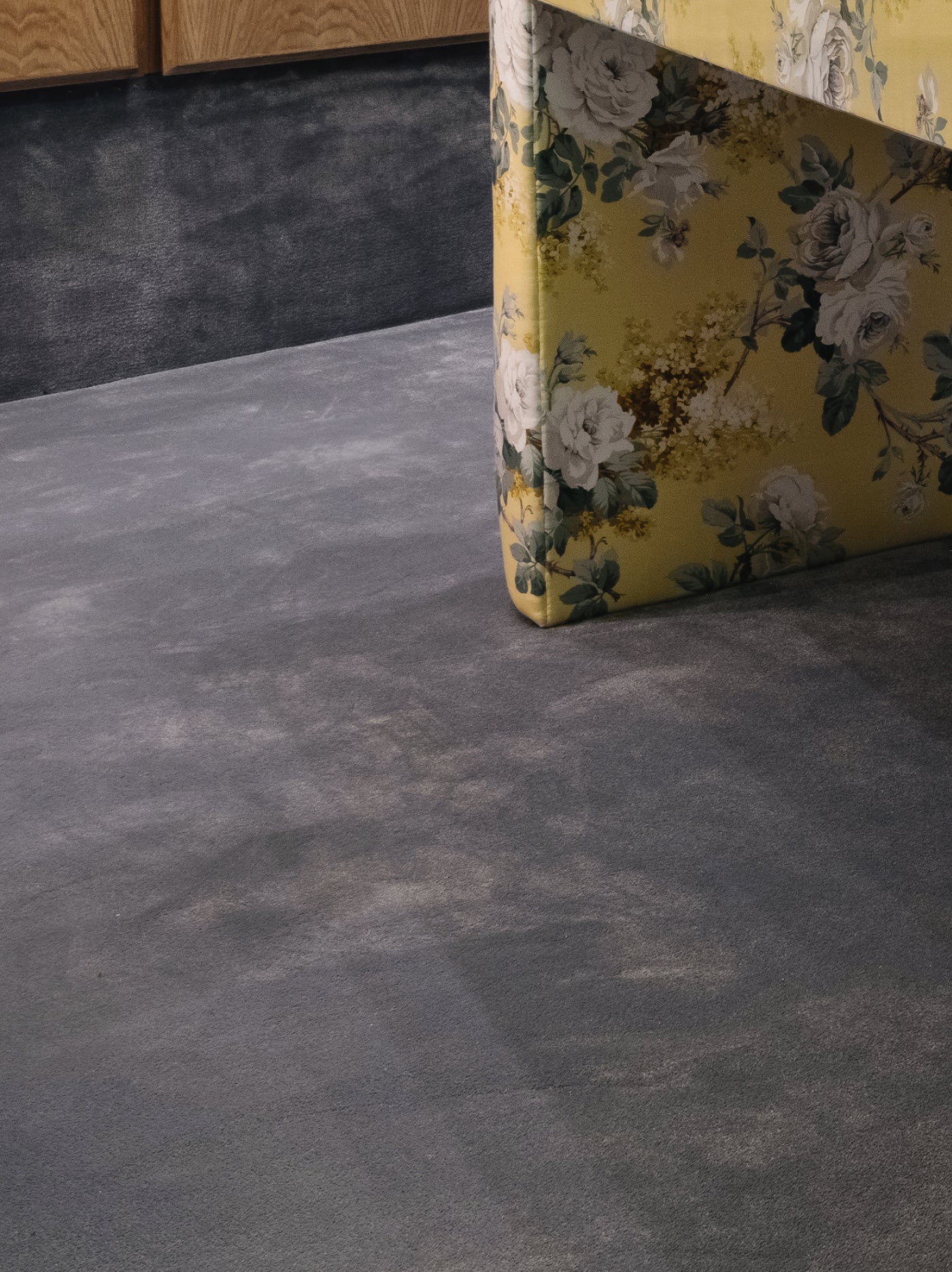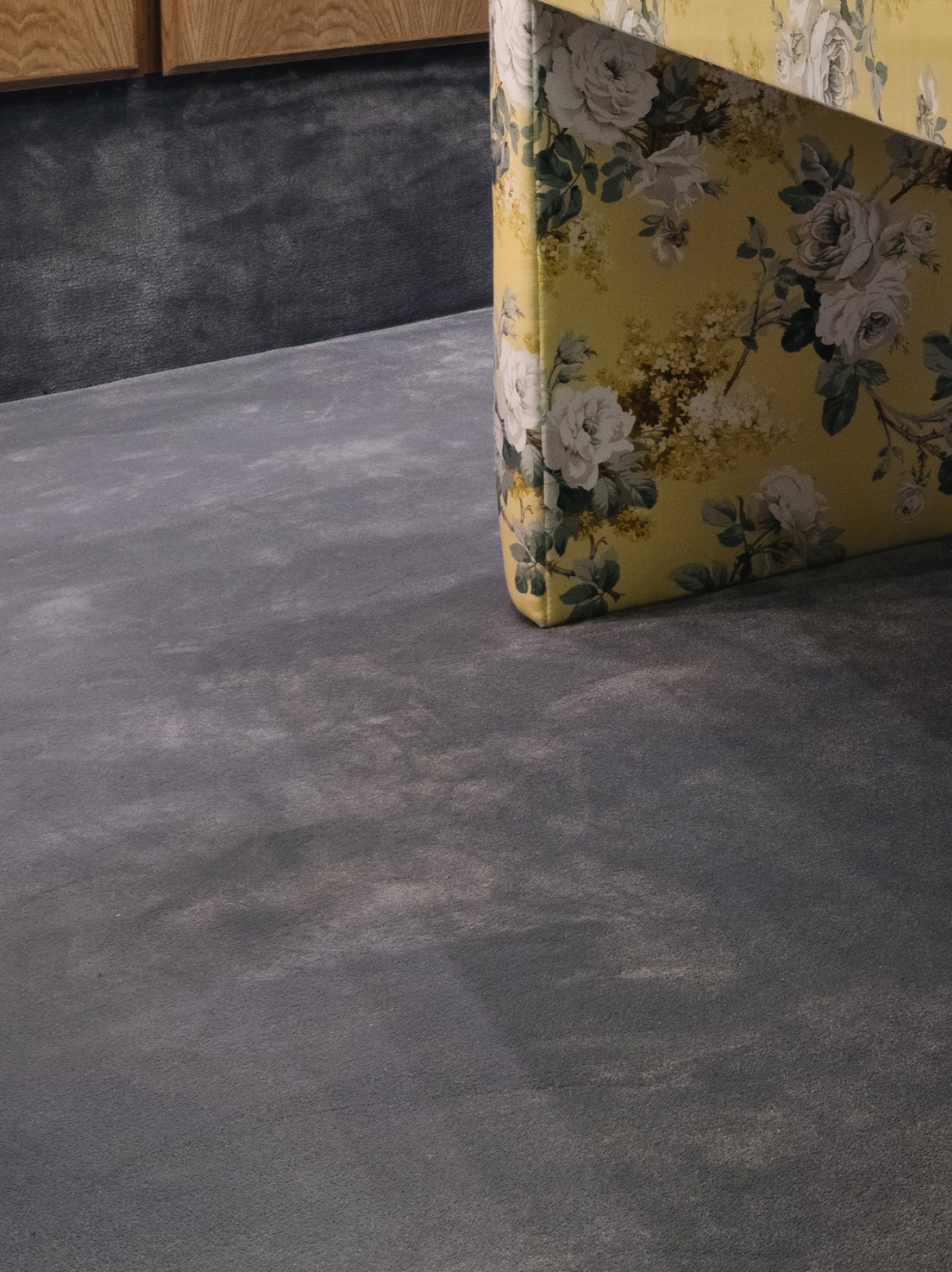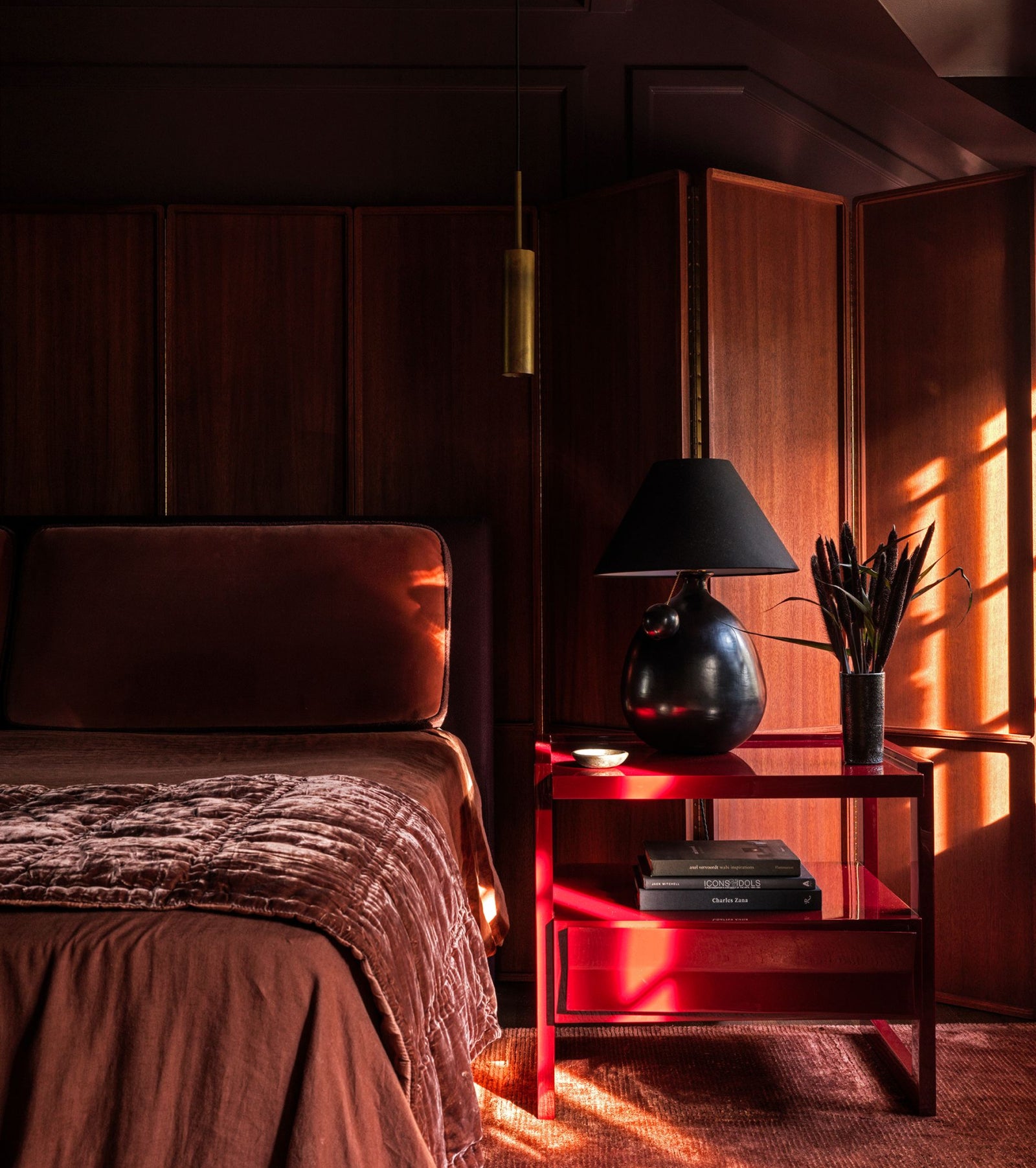Popcorn ceilings, golden oak, chintz, and expanses of colored carpets
These are materials many have abandoned in favor of more modern aesthetics. For Victoria they evoke a deep emotional connection to her upbringing in the Midwest, where such elements shaped the homes and lives of many. Lets talk about this midwest memory.
Editor: Mathew W. Swsenson
Photography: Caylon Hackwith
Lead Designer: Megan Edestrom
Mathew: What inspired you to create The New Nostalgia and how does it reflect your personal design philosophy?
Victoria Sass: Growing up in the Midwest, I’ve always had a deep connection to its landscapes, homes, and the materials that shaped them. The inspiration for The New Nostalgia comes from revisiting those elements that many have overlooked or discarded—things like golden oak, floral chintz, and even popcorn ceilings. These things hold emotional weight for me, and I wanted to embrace them, to give them new life. My design philosophy is about confronting the past, not erasing it, but rather evolving it into something contemporary and meaningful.
Mathew: The room features some materials and design elements that have often been dismissed in modern design. Why bring these back, and how do you see them fitting into the future of Midwestern interiors?
Victoria Sass: I think these materials, like chintz and golden oak, have been unfairly dismissed because they’re so strongly tied to a particular time in design history. But there’s a beauty in their familiarity and nostalgia. By reclaiming and recontextualizing them, we’re not just reminiscing about the past—we’re creating a new narrative. I see this as part of the future of Midwestern interiors: recognizing what shaped us, while pushing forward with fresh ideas that still respect that legacy.
Mathew: Can you tell us more about the collaboration with artists and makers involved in this project, like Rovan Hand-Crafted Furniture, Tara Austin, and Irve Dell?
Victoria Sass: Collaboration is at the heart of what we do at Prospect Refuge. For this project, we worked with some incredible artisans. Rovan Hand-Crafted Furniture built the upholstered channeled desk, which feels almost like a cherished family heirloom brought to life. Tara Austin’s hand-painted rosemaling screen is a modern take on traditional Scandinavian folk art, which is very personal to me and my roots. And Irve Dell’s bronze cabinet pulls bring a level of craftsmanship and personal symbolism that ties the room together. It’s these collaborative efforts that make the space feel layered and intimate.
Mathew: How does this room explore the concept of memory and nostalgia, particularly within a Midwestern context?
Victoria Sass: The Midwest has its own visual language, and much of that comes from materials and patterns that have been part of homes here for generations. For me, this room is an excavation of memory. It’s about how these design elements, like the oak, the chintz, and even the textured wallpaper, evoke a sense of place and history. But it’s not just a sentimental look back. The design explores the push and pull between comfort and discomfort, memory and reinvention. I want people to feel both familiar and challenged when they step into this space.
Mathew: What would you say is the central message or feeling you hope people take away from The New Nostalgia?
Victoria Sass: I hope people walk away with a deeper appreciation for the beauty of the Midwest—its history, its quirks, and its overlooked design elements. More than that, I hope they see the value in creating spaces that are personal, that tell a story, and that challenge the idea of what “modern” can mean. It’s about embracing the layers of life and memory that make a place feel like home, while still pushing boundaries and exploring new creative possibilities.
Mathew: Can popcorn ceilings really make a return into interiors?
Victoria Sass: I don't really think that actual popcorn ceilings can make a comeback— not in their original form anyway, but the idea of a textured ceiling brings a subtle visual interest that can be reimagined for current interiors. In The New Nostalgia room, we used a flocked wallpaper that mimics the texture of popcorn ceilings but in a much more refined and updated way. It’s all about context and application. It’s not about nostalgia for the sake of it—it’s about taking what worked and adapting it for the now.
Mathew: How do you feel about carpeting that leaves marks whenever it’s touched?
Victoria Sass: (Laughs) You know, I have a soft spot for those carpets! There’s something endearing about the way they respond to their environment—they’re a bit like a living thing. In The New Nostalgia, the blue carpet wraps the room, creating a cozy, immersive feel, and yes, it leaves marks when you walk on it. To me, it’s a sign of a lived-in space. It’s a small reminder that life isn’t static—it’s interactive. I think it adds to the room’s overall character.

